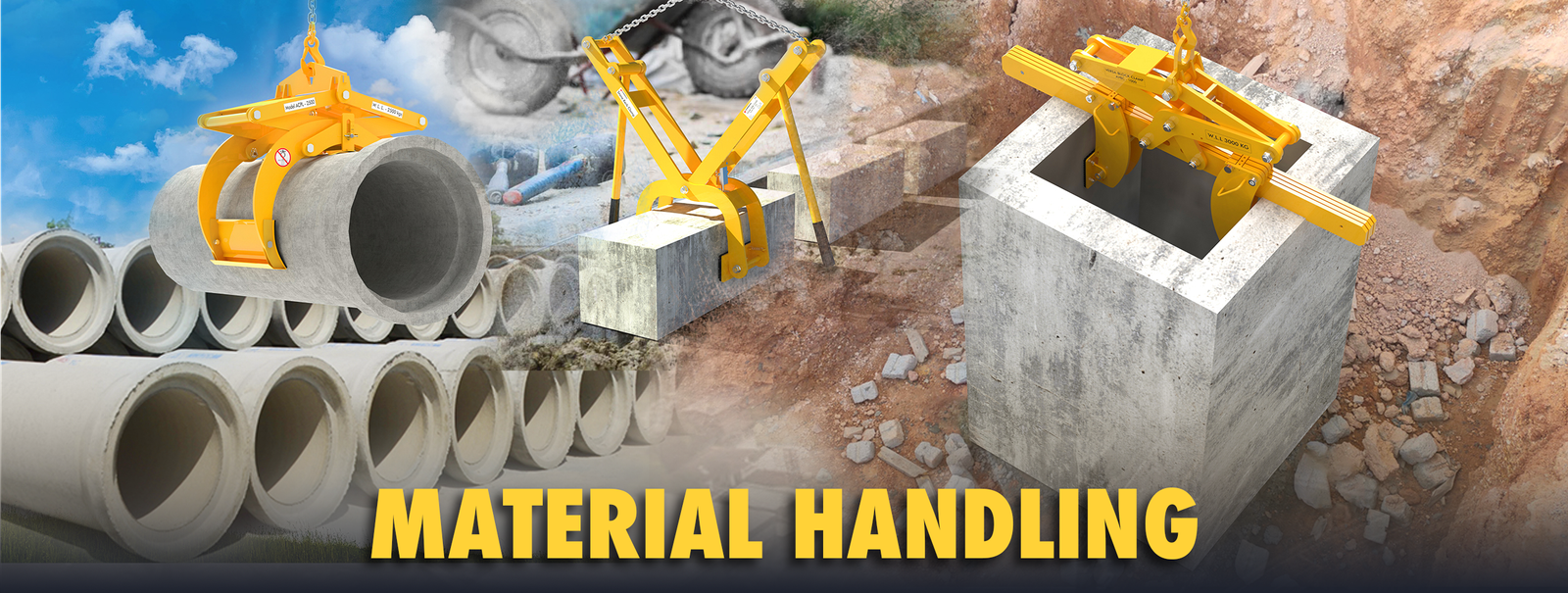
Material handling involves the movement, protection, storage, and control of materials and products throughout various industries, playing a crucial role in ensuring operational efficiency and workplace safety.

Material handling involves the movement, protection, storage, and control of materials and products throughout various industries, playing a crucial role in ensuring operational efficiency and workplace safety. Understanding the fundamentals of material handling and adopting appropriate safety practices are essential for maintaining productivity and protecting workers from potential hazards.
What Is Material Handling?
Material handling refers to the entire process of moving, storing, and protecting materials and products in manufacturing, warehousing, construction, and logistics. Proper material handling reduces downtime, enhances productivity, and ensures workplace safety.
Types of Material Handling Equipment
To effectively manage material handling tasks, various specialized equipment is employed, categorized broadly into lifting equipment, attachments, transportation devices, storage solutions, and workstation tools.
Lifting Equipment
Lifting equipment significantly reduces workplace accidents and increases efficiency. Key lifting equipment includes:

Slab Lifters
Aardwolf Slab Lifters provide safe and effective handling of heavy stone or concrete slabs. These slab lifters ensure secure gripping, reducing risks of accidental drops or worker injuries.
Vacuum Lifters
Vacuum Lifters utilize suction technology to safely manage delicate items such as glass sheets or polished stone slabs, eliminating manual handling risks.

Vacuum Tube Lifters
Vacuum tube lifters allow effortless lifting of objects like boxes, bags, or drums, minimizing physical strain and reducing ergonomic injuries.
Specialized Lifters
- Box Lifting Clamp: Designed to safely lift boxes without compromising contents.
- Drum Lifters: Facilitate secure handling of heavy drums filled with liquids or hazardous materials.
- Bag Lifters, Rock Lifters, Brick Lifters, Pipe Lifters, and Glass Lifters: Engineered specifically for different materials, ensuring stability and safety during transport.
Load Handling Attachments
Load handling attachments extend the capability and versatility of lifting equipment:
- Slab Bundle Handler: Designed for efficiently moving multiple slabs at once.
- Stone Carrying Hand Clamps and Hand Vacuum Cups: Provide manual yet secure methods to handle smaller stone and glass products.
- Cargo Lashings & Slings: Essential tools for safely securing loads during transit or lifting.
Cranes and Hoists
Cranes and hoists are fundamental in material handling and safety:
- Jib Cranes: Facilitate precise lifting in compact spaces.
- Light Load Cranes: Suitable for lighter loads, providing greater control and quick movement.
- Hoists and Cranes: Used extensively across various industries for heavy-duty lifting and positioning tasks.
Forklift Equipment
Forklifts, complemented by specialized forklift attachments and accessories, significantly improve handling efficiency and safety:
- Forklift Attachments: Extend forklift capabilities for lifting barrels, slabs, or irregular loads.
- Attachments & Accessories: Include clamps, rotators, and specially designed forks for specific lifting tasks.
Storage Solutions: Slab & Bundle Racks
Efficient and safe storage systems include:
- Slab Racks: Keep slabs safely stored, minimizing the risk of damage.
- A-Frames (Demountable Frames, Transport Frames, Foldable ‘A’ Frames, Storage Frames): Offer secure transportation and effective storage solutions.
- Wolf Racks: Robust racks ideal for storing heavy stone slabs or bundles securely.
Transportation Equipment
Effective transportation devices enhance workflow and reduce workplace injuries:
- Trolleys and Hand Trucks: Essential for moving materials effortlessly across work areas, minimizing worker strain.
- Scissor Lifters: Scissor lifters efficiently lift and move heavy materials securely, providing stability during transfers.
- Barrier Lifters: Specialized lifters designed explicitly for safely handling concrete barriers.
Workbenches & Workstations
Efficient workspace arrangements significantly impact productivity and safety:
- Workbenches and Work Stations: Provide ergonomic and stable working surfaces, reducing worker fatigue and injuries.
- Masonry Saws: Essential equipment for accurate cutting tasks, crucial in maintaining workplace safety.
- Waste Bins and Workshop Tools: Ensure clean, safe, and organized work environments, reducing the risk of accidents.
Importance of Safety in Material Handling
Safety is paramount in material handling to prevent injuries, protect workers, and avoid costly downtimes. Effective safety practices include:
Regular Equipment Inspection
Routine checks of lifting equipment, forklift attachments, and transport systems ensure they are in good working condition, significantly reducing accidents caused by equipment failure.
Employee Training
Workers should be thoroughly trained on the correct usage of all handling equipment, including specific tools like the lifting clamp, vacuum lifters, and scissor lifters. Comprehensive training reduces operator errors and enhances safety.
Proper Use of PPE
Personal protective equipment (PPE), including gloves, helmets, safety glasses, and footwear, is essential to protect workers during material handling activities.
Ergonomic Practices
Adopting ergonomic lifting practices, such as using vacuum lifters and automated handling equipment, significantly minimizes physical strain and repetitive stress injuries.
Real-Life Example of Safe Material Handling
A common scenario in stone fabrication involves safely unloading heavy stone slabs from delivery vehicles. Workers utilize Aardwolf slab lifters to securely lift and position slabs onto transport frames. Next, vacuum lifters or scissor lifters safely move slabs into storage racks or onto workbenches, significantly reducing the physical effort required and minimizing accident risks.
Conclusion
Understanding material handling and prioritizing safety through proper equipment selection, regular inspections, adequate training, and effective ergonomic practices ensures workplace efficiency and protects the workforce. Investing in high-quality handling equipment such as slab lifters, vacuum lifters, cranes, and ergonomic workstations is critical for safe and successful industrial operations.

